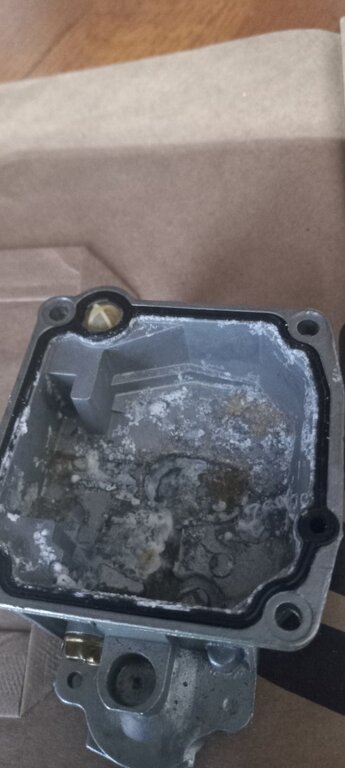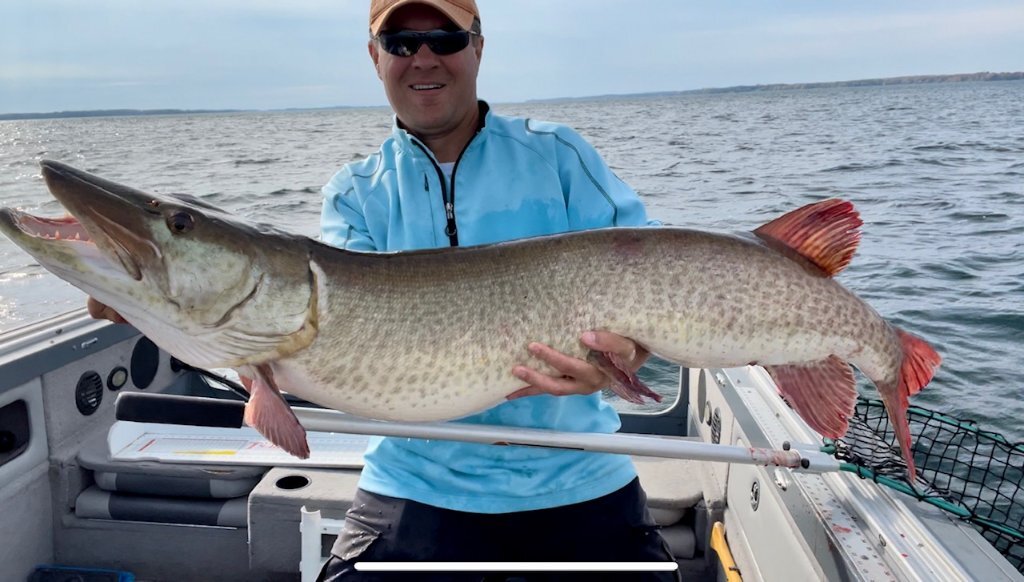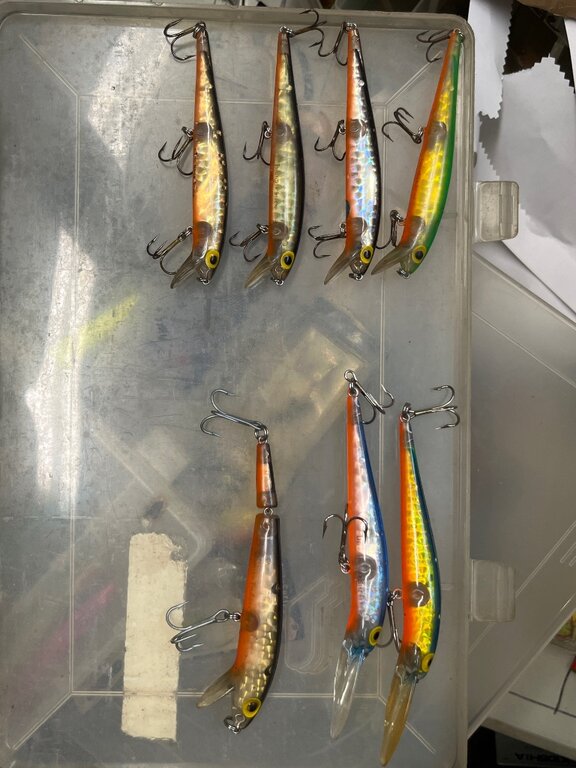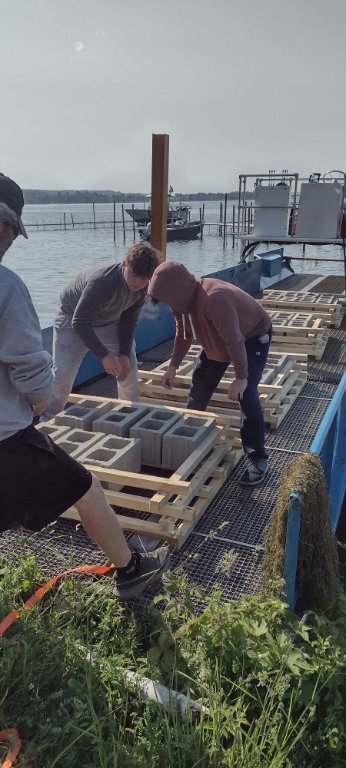-
Posts
1,069 -
Joined
-
Last visited
muskiedreams's Achievements
67
Reputation
-

Spinning rod for pike and musky
muskiedreams replied to IV_LUK's topic in Musky, Tiger Musky & Pike (ESOX)
Generally almost, if not all, musky anglers use baitcasters for a number of practical reasons. They don't twist the line like spinning reels do. There are models specifically built to handle heavy pressure and have powerful drag systems needed to keep the fight short so as to not over stress the fish by a long fight. They can hold enough and handle 80 lb to 100 lb test braid and will have less problems with foul casts. Use of a baitcaster with musky lures, as opposed to bass lures, is technically easier because of their weight. Also two piece rods are generally more prone to breakage because of uneven bend due to the two piece connection. There are 9' rods available that telescope from the handle. So you can transport them at about 1.5' shorter. -
-
I have always used 87 octane in my 1990 Grumman with a 1990 75hp Mercury and 1995 15hp 4stroke Evenrude. I bought the boat used in 1996. I trailer the boat and have mostly been in the habit of keeping the tank full when not in use. In winter I add marine stabilizer. I have recently replaced all the small plastic fuel and oil lines inside the 90hp motor. I rebuilt the carbs many years ago but it didn't solve the problem at the time which turned out to be a weak spark issue. I also recently replaced the fuel line between the fuel tank in the bow and the motors BC it was leaking fumes. Since I trailer the boat, every time I use it the fuel in the tank gets mixed up on the way to the launch. So any stratification that may have existed is eliminated before I run the engines. Also, since I don't keep it on the water, there is less opportunity for water to be absorbed from the air since the boat is mostly kept away from the water where there is more humidity during changes in temperature. If the boat is kept on the water with a partially full tank that has vents to avoid pressure changes, every time there is a change in temperature the tank breathes in humid air, the ethanol will absorb it and sink to the bottom. Over time it will build up. Especially over a season with multiple fuel-ups. That is when you really run into trouble. So docking all the time with low fuel level increases the amount of air in the tank and therefore with a large amount of air in the tank each expansion and contraction cycle will draw in a larger amount of moisture into the system. So IMO it is more of a problem for boats that are on the water all season and when the tanks are not kept topped off.
-

Otisco Lake Panfishing question...
muskiedreams replied to bulletbob's topic in Finger Lakes Discussion
All it takes is less than a handful of people harvesting more than they eat for profit, including taking multiple bag limits in a day. Maybe less people should turn a blind eye but without stiff penalties and strong enforcement, perps will see no reason not to do it. -

2023 Year End Post - Fishing with Family
muskiedreams replied to BlueEye's topic in Musky, Tiger Musky & Pike (ESOX)
-
The DEC would have to do a lot more than one seining survey. But that will not happen unless the issue gets raised higher in their list of priorities. So if it can be proven to be happening in other tributaries and/or if there is a growing public group voicing concern, maybe they would look more closely at the situation. I wonder if the DEC just doesn't have the resources and funding to address the situation or if there is something else going on, possibly environmentally that is affecting them. The questions to ask might be things like what environmental changes have occurred over that period of time? And, are walleye more sensitive to any of them that other species. Questions about spills from various activities such as drilling, fracking and release of methane bubbling up in tributaries which could all be contributing factors. Another thought is to try and create an AI modelling program that can be used to input all the history of weather, environmental and other conditions as well as all applicable fishery data from all pertinent sources. I think this is one area where AI can be effectively applied. So a question to ask the DEC is ... Are there any plans for them to put AI in their toolbox. I am not a huge fan of AI for everything but I think it would be a very effective tool for fisheries and other environmental management areas. Some input from the various watershed environmental groups and other environmental groups might shed some light.
-

Nice head shot of 40.25" pike caught on Conesus
muskiedreams replied to NPike's topic in Musky, Tiger Musky & Pike (ESOX)
I think that since more and more of the fishing community has been leaning more toward conservation and safely releasing all fish that are not kept, those measurements are becoming less and less important. Once you are set up, length and girth are fairly easy to measure accurately. Bump board for length and soft measuring tape in the net while in the water is easy on the fish and easy to do. Getting an accurate weight is another story. There are just too many things that can cause inaccuracy. The scale must be periodically certified and protected from anything that can affect it's accuracy. And on a boat, the boat is moving, you are moving and the fish may not be still enough to get a steady reading. That is why any official record fish have to be weighed on a certified scale on land. And also, I think that as you get older it also becomes less important. -

Nice head shot of 40.25" pike caught on Conesus
muskiedreams replied to NPike's topic in Musky, Tiger Musky & Pike (ESOX)
-

Nice head shot of 40.25" pike caught on Conesus
muskiedreams replied to NPike's topic in Musky, Tiger Musky & Pike (ESOX)
-

Nice head shot of 40.25" pike caught on Conesus
muskiedreams replied to NPike's topic in Musky, Tiger Musky & Pike (ESOX)
Another thing that helps the survival rate it to take measures to avoid rubbing the protective slime off of the fish. The slime protects it from infection. If you lay it down for measuring or a picture it is best to be on a smooth surface that has been whetted down to minimize any removal of slime. One of the reasons for using a bump board to measure unless you make a quick measure in the water. The carpet on the floor of the boat is very bad at removing slime, especially when it is dry. If too much slime is lost, the fish could die several days later from infection. -

Otisco Otisco lake spreading invasives
muskiedreams replied to justtracytrolling's topic in Finger Lakes Discussion
In a properly managed weed cutting program, the weeds that are cut must be removed to a landfill. Otherwise, they just go back into the system as nutrients. Those nutrients will feed more weeds and algae blooms. That is also a problem when using herbicides because the weeds die, decay and fall to the bottom which become nutrients for more weeds and algae to grow. The nutrients keep loading into the lake from farm and fertilizer runoff and possibly from poor septic and wastewater systems which are the root causes of the problem. Just cutting weeds without removing them just doesn't make sense. It is a complicated problem that will take a whole system approach to solve. -

for sale : usa Lots of lots of baits for sale
muskiedreams replied to steelie1's topic in Classifieds - Buy, Sell, Trade or Rent
-
Spectrum News is airing a great news segment today about the crib project, and the involvement of MI Chapter 69 members, Chautauqua Lake Outdoors and Chautauqua Lake Association. Great segment wit interview of key people wit a focus on our conservation efforts in NYS. I couldn't find it on the web. There may be a way with a sign up and log in or a mobile app. Otherwise you will have to watch spectrum News on cable today. I think it may be on just after the top of every hour.



.jpg.f99585f311f95f9f8e7e35500fd5ea33.jpg)






